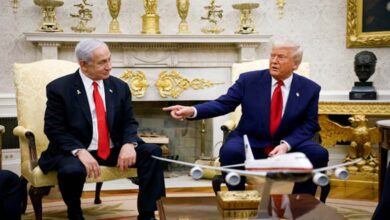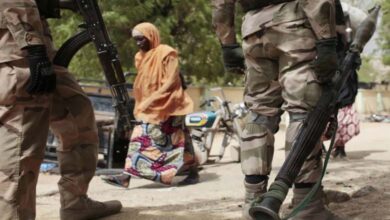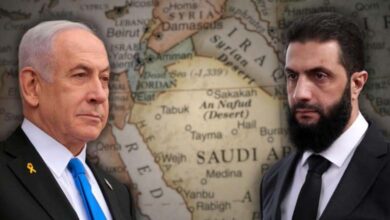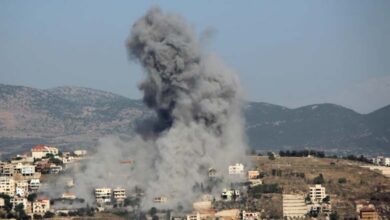The Night of Iran’s Attack on Israel: “Behind the Skies”
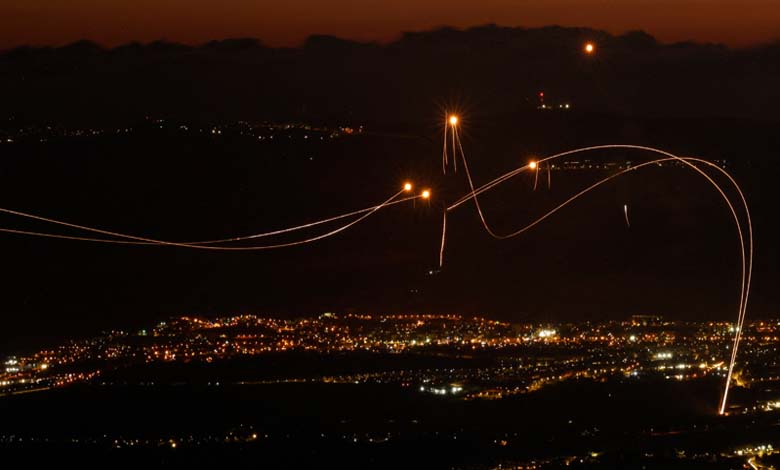
Lines and bright points crowded the dark sky that night, but few knew that a “defense war” was raging with one goal: protecting a U.S. ally.
-
No Ceasefire in Gaza until De-escalation between Iran and Israel
-
Troubles and Crises: International Economy Affected by Iran and Israel Events
This happened on April 13, when Iran launched more than 300 drones, ballistic missiles, and cruise missiles at Israel in an attack far larger than the U.S. military had anticipated.
The Iranian attack was a response to Israel’s targeting of the Iranian consulate building in Damascus earlier that month, which resulted in the death of senior commanders of the Islamic Revolutionary Guard Corps.
-
“Surprise” in Israeli Attack on Iran: Advance Warning of Date and Targets?
-
Leaks Reveal Israeli Preparations to Strike Iran and U.S. Concerns
“Behind the Skies”
When U.S. pilot Benjamin Covey took off with his F-15 fighter jet one night last spring, he did not expect to run out of missiles while countering the massive Iranian attack on Israel.
According to CNN, pilot Curtis Culver said, “The mission that night was to shoot down drones with whatever weapons we had available to protect our ally. The missiles ran out very quickly, probably within 20 minutes.”
-
Details of Iran’s “Recruitment” of an Israeli and His Girlfriend to Carry Out an “Assassination” Operation
-
In Case of an Israeli Attack: Source Discusses Iran’s Plan and Target Bank
The network also reported that after receiving instructions to use any weapon at their disposal to help counter the attack, Covey and his co-pilot, Lacey Hester, devised a plan.
In their first interview since that night, Hester and Covey described flying as close as possible to an Iranian drone, well below the minimum safe altitude for an F-15, a “highly dangerous maneuver, especially in total darkness, against a barely visible target.”
Covey explained: “You feel the terrain speeding by as you get closer and closer to the ground. The danger was extremely high.”
-
Iranian Missiles on Israel: Launch and Interception Costs
-
Iran’s Secret Document Ignites a Dispute within the Israeli Military and Netanyahu’s Office
Fatigue and Lack of Training
Despite the scale of the attack, U.S. forces managed to intercept, by air and sea, 70 drones and three ballistic missiles that night, largely thwarting the assault.
However, F-15 pilots and others involved in the operation admitted to CNN that they sometimes felt exhausted while resisting the Iranian attack.
The assault represented the first real test for U.S. air forces against a prolonged and large-scale drone attack.
-
Washington Post reveals how Lebanese pay the price for Iranian threats and ongoing Hezbollah-Israel clashes
-
Will Iran Abandon Its Revenge Against Israel in Exchange for a Gaza Ceasefire?
As chaos engulfed the skies that night, the situation was equally tense at an undisclosed U.S. military base in the Middle East.
Hester stated: “When we received the order to fly that night, we had no idea what was coming.” Pilot Timothy Cozzy added that fighter pilots had not had much time to train beforehand.
He noted: “Drones are cheap and low-risk for the enemy. They can send massive numbers of them, and we have to protect our allies. We haven’t started large-scale training yet.”
-
Leaks from the Secret Meeting: Iran Refuses to Support Hezbollah and its Iraqi Militias Against Israel
-
Intense Cyber War Between Israel and Iran
A New Generation of Warfare
According to CNN, the attack highlighted the extent to which the U.S. military must adapt to a new generation of warfare, pitting multimillion-dollar fighter jets against cheap, slow-moving drones that can easily evade even the most advanced radar systems.
Another challenge was the rapid depletion of the most effective weapons for fighter jets against drones: an F-15 can only carry eight air-to-air missiles at a time.
Curtis Culver stated: “The mission that night was to shoot down drones with whatever weapons we had available to protect our ally. The missiles ran out very quickly, probably within 20 minutes.”
-
Washington Tests Military Capabilities Amid Escalation Between Israel and Iran
-
Israel Caught Between Rafah and Iran.. Will it Break the Pressure Barrier?
Once the missiles were exhausted, the next mission became even harder: landing at the U.S. military base, where Iranian missiles and drones intercepted by Patriot air defense systems exploded, scattering debris across the runways, according to CNN.
Although ground forces were advised to take shelter, many did not, instead focusing on getting planes back into the air to continue the fight, the source added.
-
Israeli Army and Mossad Agree on Plans to Strike Iran
-
Israeli Movements to Confront Iranian Threat: Reservist Call-up and Communication Jamming




